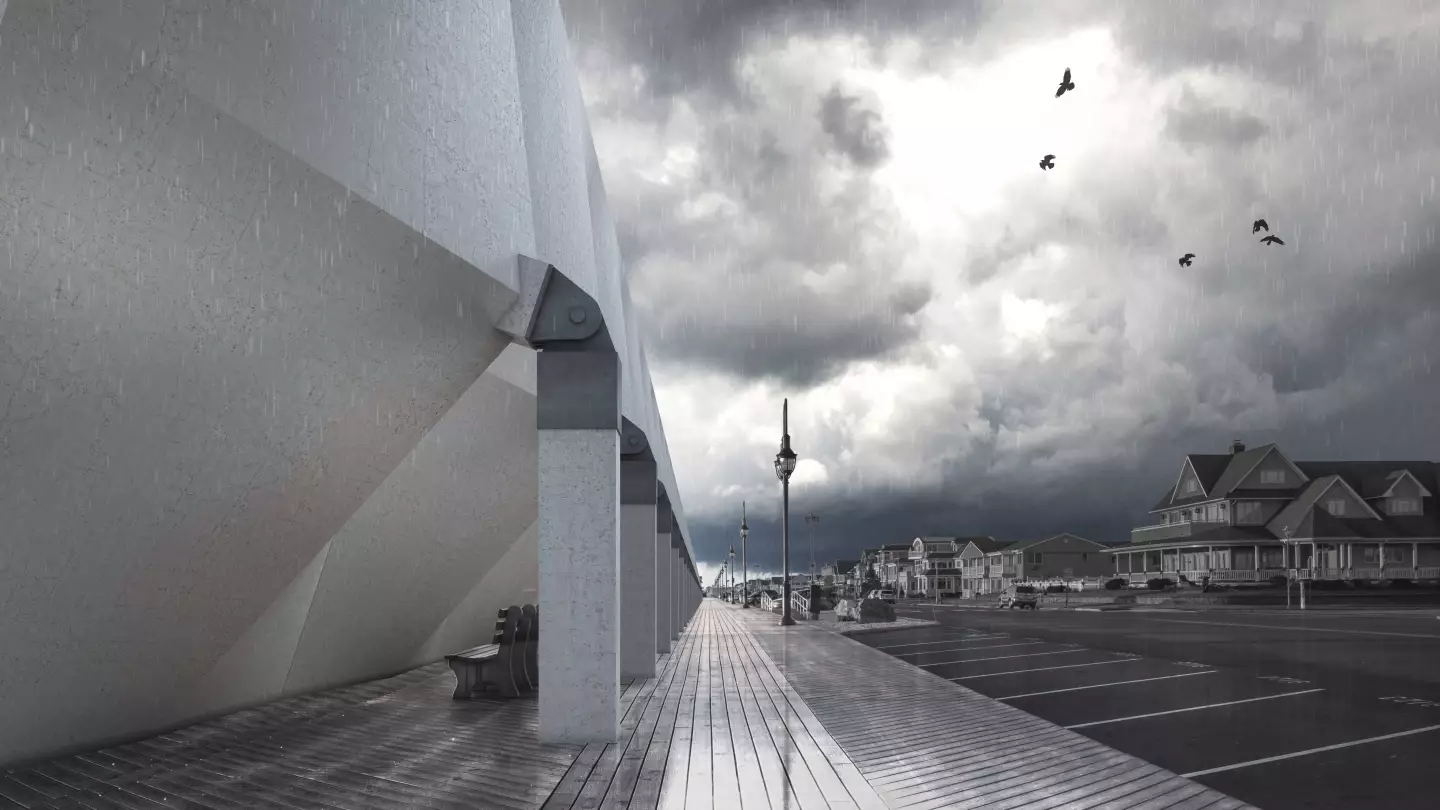Although seawalls certainly do protect coastal communities from storm surge waves, those walls can be unsightly, plus they restrict access to the water. A proposed new system gets around those problems, by doubling as a canopy when not serving storm duty.
The concept is being developed by Prof. Maria Garlock, Assoc. Prof. Branko Glišić and PhD student Shengzhe Wang, all of Princeton University.
As long as the weather wasn't stormy, the system would take the form of a series of giant square "umbrellas," protecting people from the sun and rain as they walk along the shoreline.
Each unit's top section would measure about 8 meters (26 ft) per side, and be made up of a reinforced concrete shell about 4 inches thick (102 mm). That shell would have a high-strength saddle-like shape known as a hyperbolic paraboloid, or a hypar for short.
Supporting the horizontal shell would be a set of vertical columns, measuring 10 feet tall by 20 square inches thick (3 m by 129 sq cm). Those columns would be attached to the underside of the shell via motorized hinges.

When a storm was approaching, the shell would tilt relative to the columns, so it would be facing out to the sea instead of up to sky. It could then block incoming waves, using its hypar shape to deflect the wave energy and redirect the water back outward. Based on computer models, it is estimated that the shells should remain stable even when receiving a wall of water approximately 75 percent of their 8-meter height.
And as an added benefit, the shells could be used to collect rainwater and solar power when in their upright orientation. Wang has now built a physical miniature model of the system, with umbrellas measuring about 6 inches across (152 mm), which will be tested in a 10-ft (3-m) water channel.
The research is described in a paper that was recently published in the Journal of Structural Engineering.
Source: Princeton University





